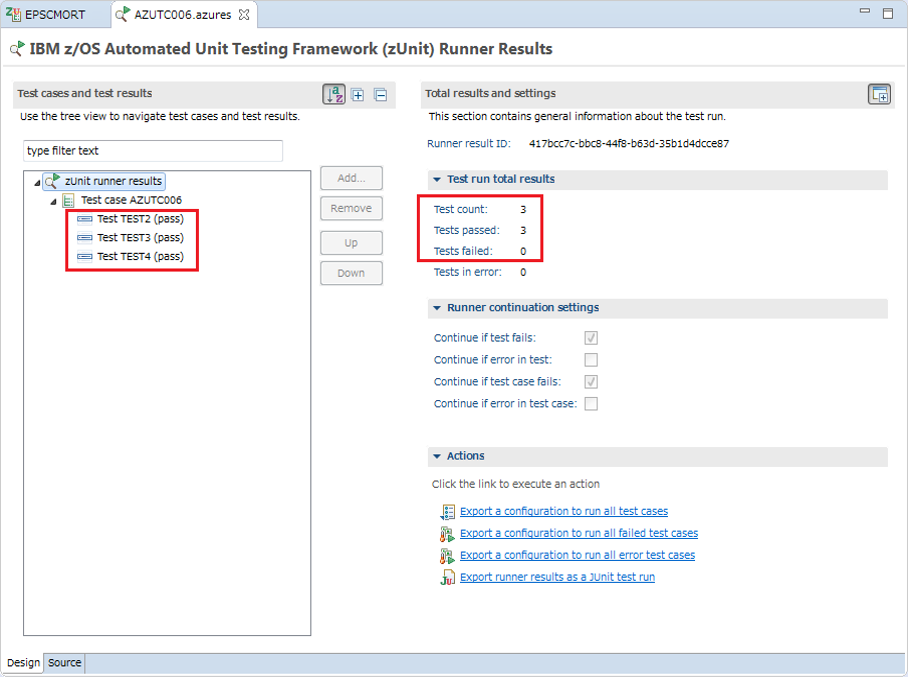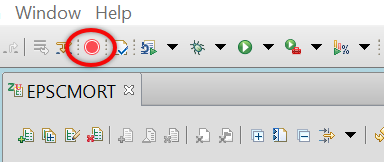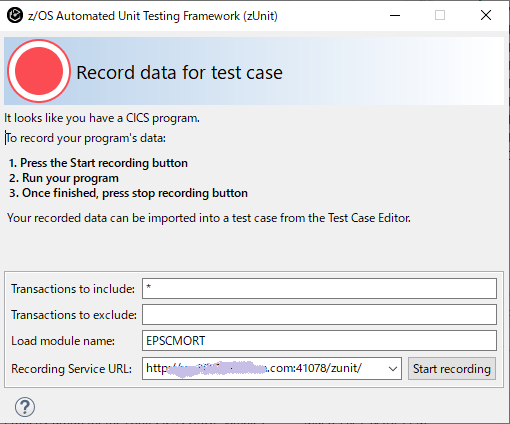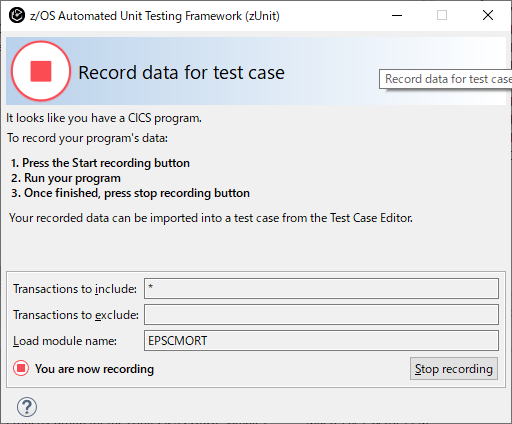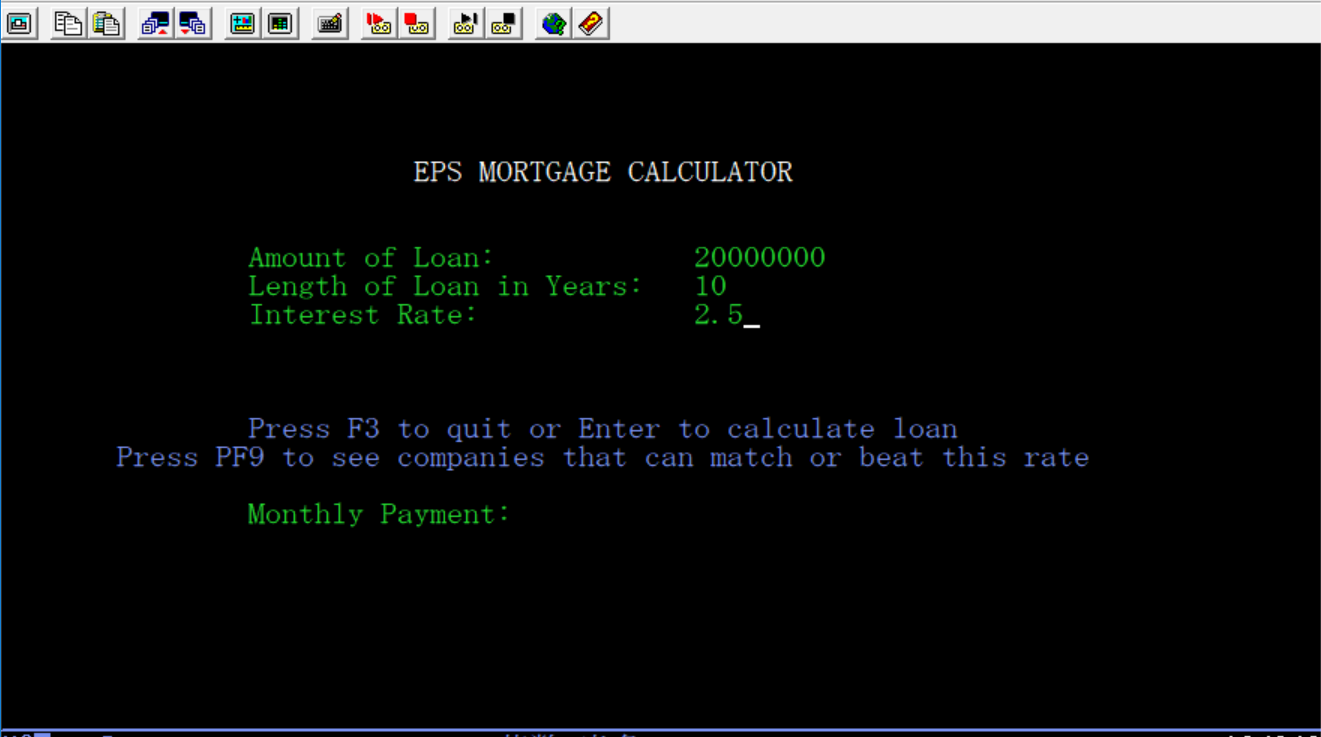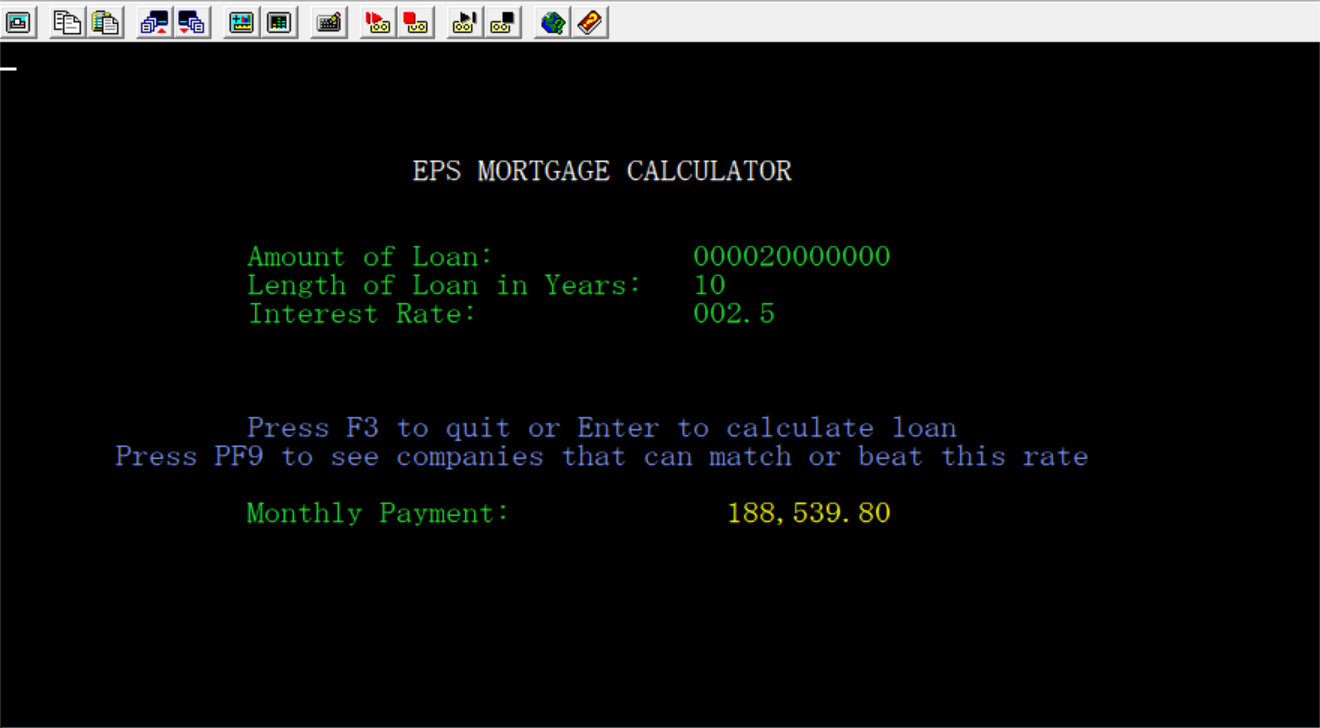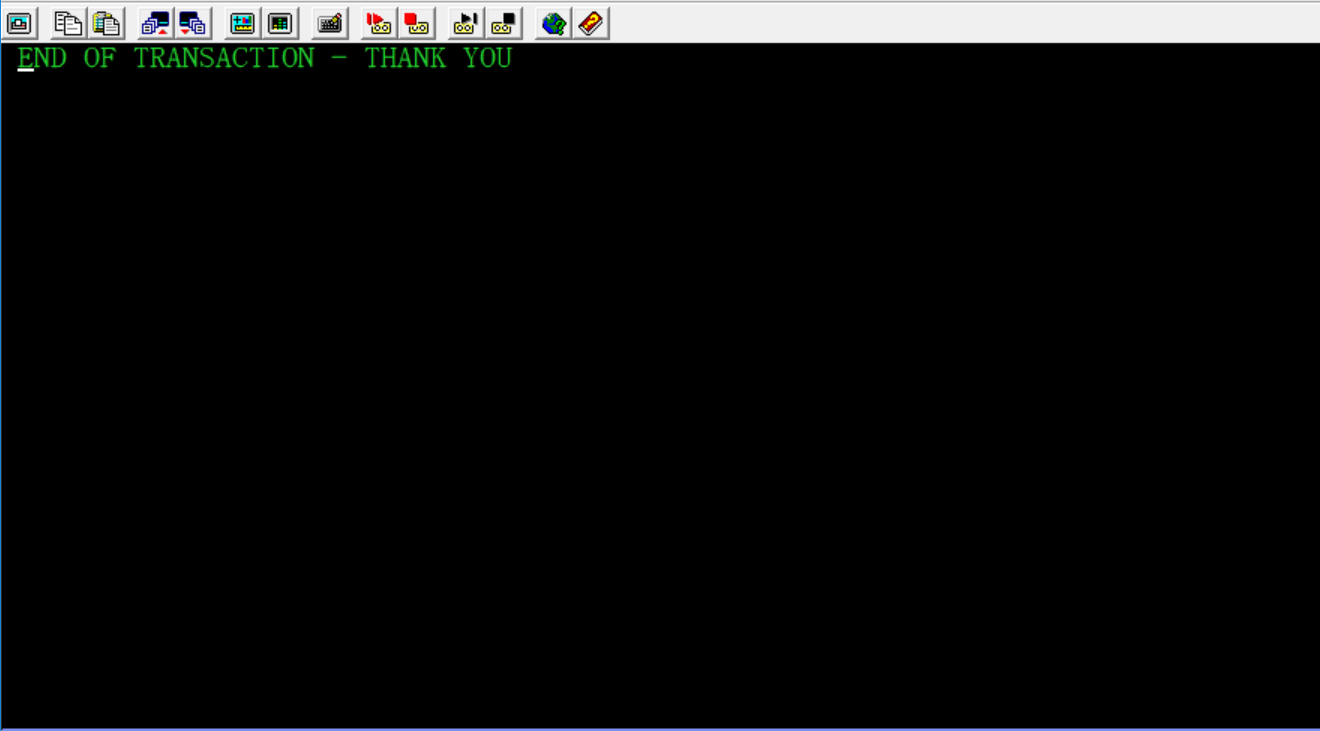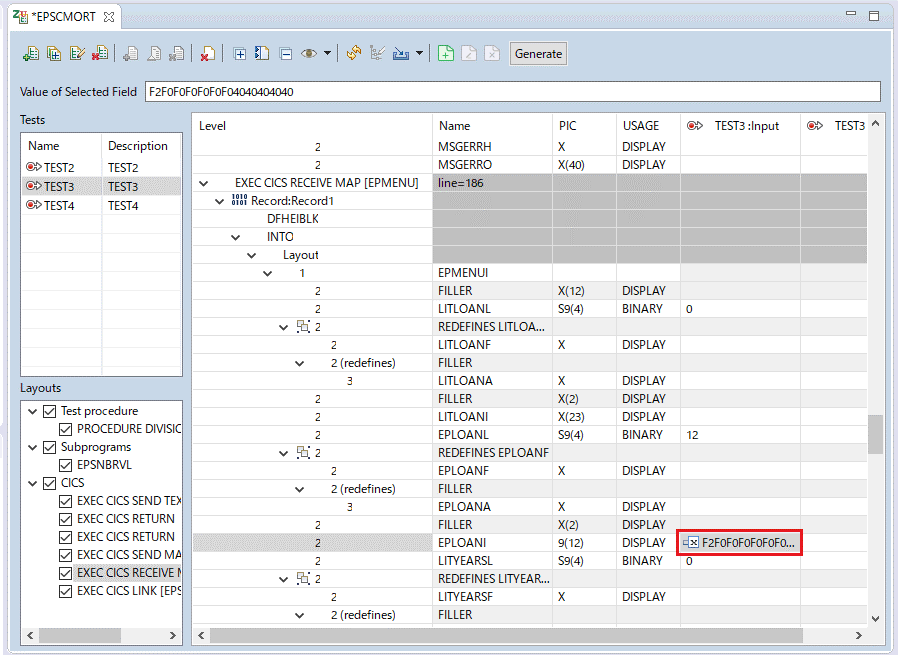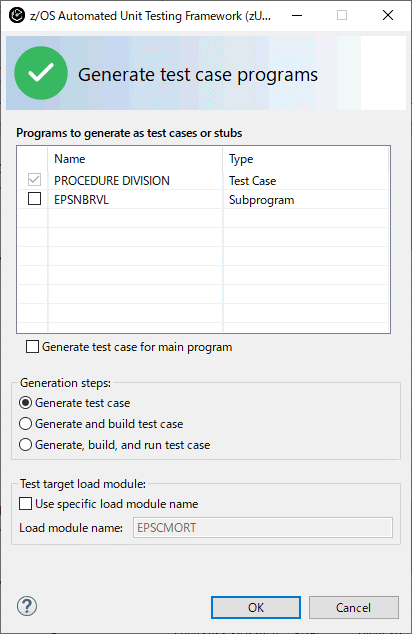Record and import data into the AZUTC006.cbl test case
In the Test Case Editor, you can record data from a CICS application running in CICS, and import the data into a test case, and then generate, build, and run the AZUTC006.cbl test case outside of CICS to see the test results for the imported data.
Recording and importing data
Before you begin
This procedure uses a sample program included with IBM® Developer for z/OS®. It also uses a
z/OS project that was created by the sample setup procedure.
Before using this procedure:
- Set up the sample files by using the instructions in Setup instructions.
- Create/modify a test case for the sample file by using the instructions in Create/modify a test case from EPSCMORT.cbl.
Procedure
Results
The ZUnit test runner starts and runs TEST2, TEST3, and TEST4. When it completes, the
ZUnit Runner Results view opens and shows that all three tests passed the
run.